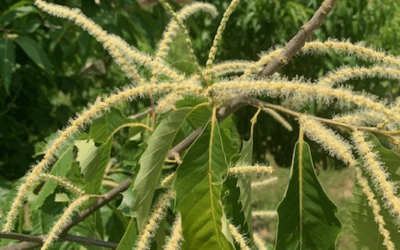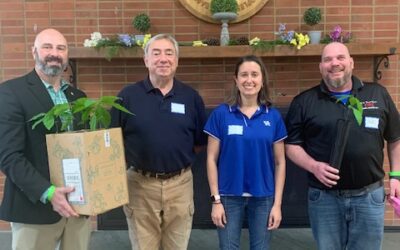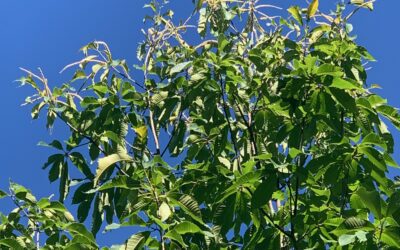
Contact us at gro.fcat@retpahCYK
About Us
Hello from the Kentucky Chapter of The American Chestnut Foundation!
We are an active group of Volunteers who work together to help the national effort to restore the American Chestnut back into its native forests. With our Partners, we manage several orchards of hybrid American Chestnuts and full American Chestnuts that facilitate breeding options.
Wild American Chestnuts are still found across Kentucky in their native range forests. While an extremely small number of wild American Chestnut trees survive the blight to grow large enough to produce flowers and burrs, there are many sprouts that grow from the roots of the original trees. Take a look at the original American Chestnut Range Map. American chestnuts like well-drained, acidic sandstone soils. They do not like low acidic clay soils or soils and low areas that hold water.
We invite you to help search for wild Americans and to record them on the free ‘TreeSnap’ app. Or you can contact us via our Kentucky Chapter Facebook Page to let us know their location and if you need help to ID that your trees are full American or a Chinese or Japanese Chestnut, or a hybrid with mixed parentage. You can see general locations of wild American Chestnuts found and mapped to date on the TreeSnap website: https://treesnap.org/ Choose “MAP” from the menu to see general tree locations, with the knowledge that the app moves the exact tree locations by about five miles each to protect the individual trees and the landowners. With the “OBSERVATION CATEGORY” filter box, select “American Chestnut” to remove the visual clutter of other species that are also entered into TreeSnap.
JOIN US. Become a Member. Become a Volunteer. Click on the BECOME A MEMBER button to the right to simultaneously join the national TACF organization, plus the Kentucky Chapter. You will enjoy working beside and developing friendships with many other conservation minded people who are taking a variety of actions to do our part, along with our sister Appalachian state chestnut chapters, to restore this iconic American tree.

Kentucky Chapter Menu
Latest News
Using Pollen from Land Between The Lakes
WE’RE SO HAPPY …….. RETURNED TO STEVE HARTMAN FULL AMERICAN ORCHARD, SCOTTSVILLE, KY near Tennessee Border to apply pollen from three LBL wild Americans, harvested, processed and stored last June by Lee Grace, UK Forestry Technician, from trees previously TreeSnapped...
KY TACF Partnership with USFS Daniel Boone National Forest
Thank you Scott Ray for inviting us to attend DBNF Annual Meeting held at Berea College Dr. Ellen Crocker, Scott Ray, and Ken Darnell, KY TACF Board Members, conducted a presentation on TreeSnap and the State University of New York's "Darling 58" transgenic American...
Many Miles Completed in Search for wild, full American Chestnuts Across Kentucky
Our Kentucky Volunteers have driven and hiked many miles across the state searching wild full American Chestnuts and “Snapped” them into our data base using the free TreeSnap app. We estimate that we have observed close to 4,000 wild Americans, “Snapping” 1,543...




